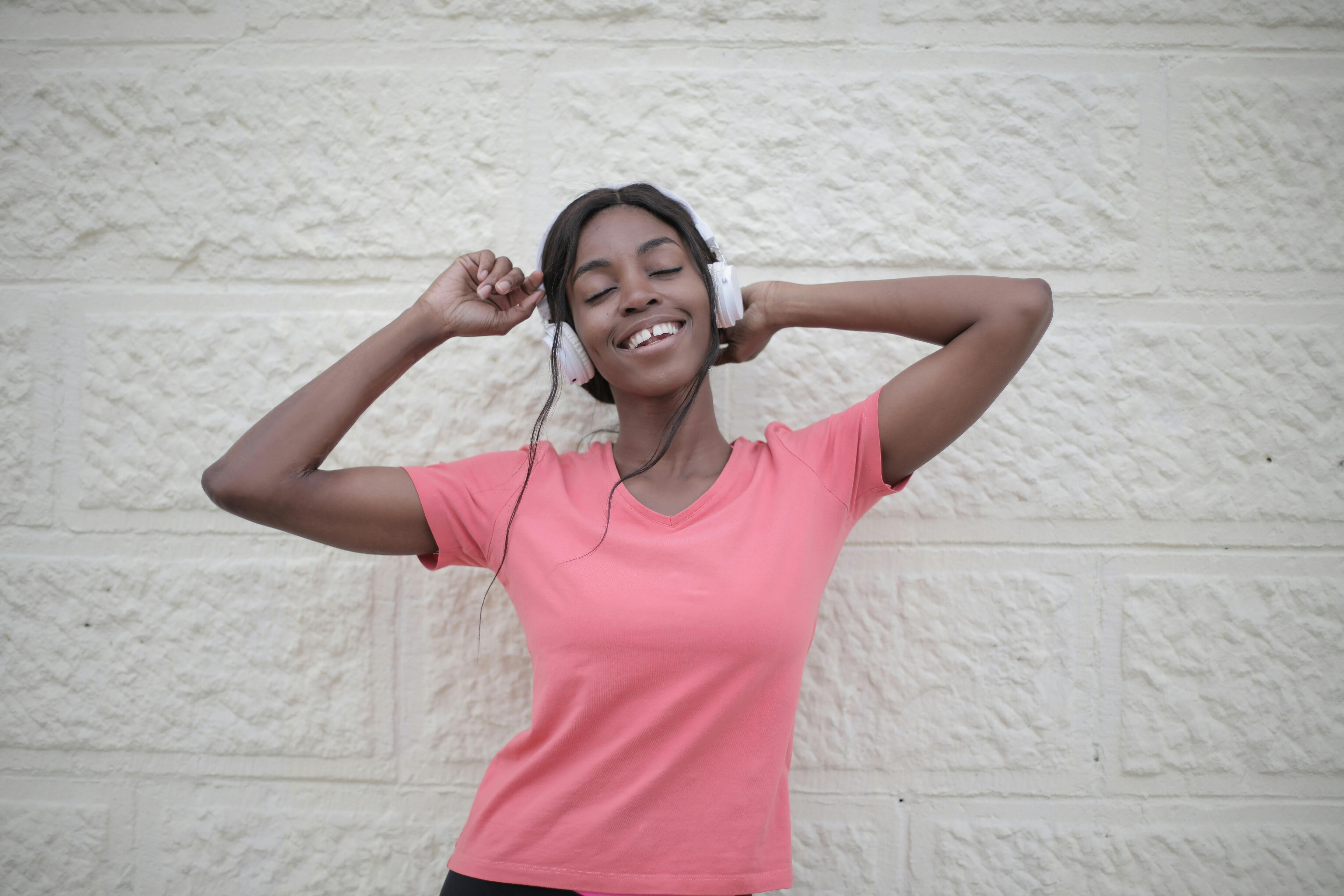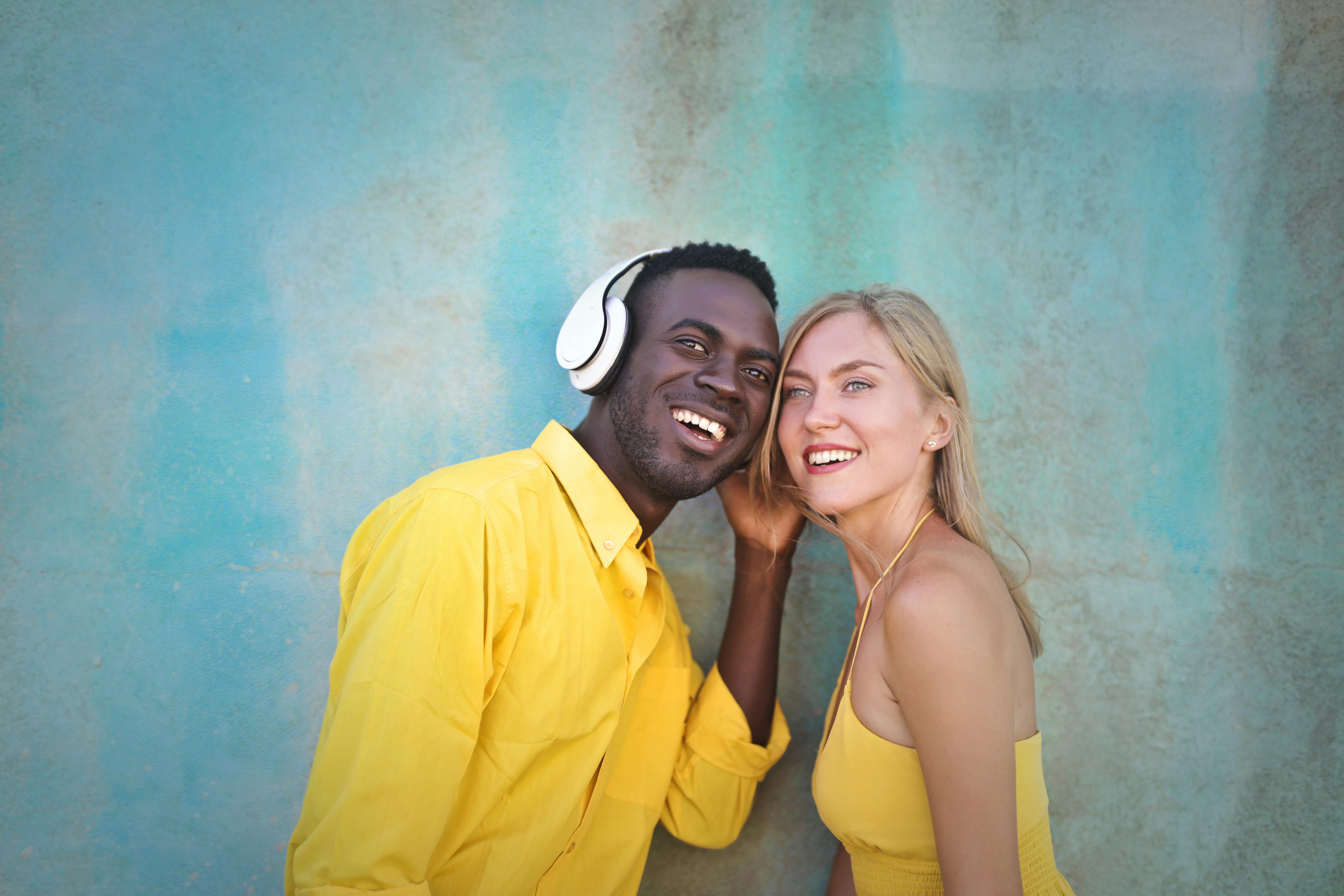Why Do Autistic People Wear Headphones

Autism is a developmental disability that can affect how a person communicates and interacts with the world around them. For many autistic people, wearing headphones can be an important part of managing their environment and helping them to feel more comfortable. Headphones can help reduce sensory overload, block out distracting noises, and provide calming white noise. They also give autistic individuals a feeling of control over their environment by allowing them to control what audio they are hearing. By wearing headphones, autistic people can create a more comfortable space for themselves and better manage the sensory input they receive from the world around them.Wearing headphones can offer a number of benefits to autistic people. It can help to reduce sensory overload, allowing them to better focus on their tasks and minimize distractions from background noise. Additionally, headphones can provide calming white noise that allows autistic people to relax and feel more at ease in places with loud noises or other stimuli. Finally, headphones can be a way for autistic people to express themselves, since they often struggle with verbal communication.
How Do Headphones Help Autistic People?
Headphones can be an invaluable tool for autistic people who are struggling with sensory overload. By using headphones, individuals on the autism spectrum can reduce the level of noise around them, making it easier to focus and concentrate on tasks. Noise-canceling headphones can be especially helpful in this regard, as they block out unwanted background noise and provide a sense of peace and quiet. Additionally, headphones can also provide a sense of comfort and safety for those who may feel anxious or overwhelmed in certain situations.
Headphones can also help autistic people better manage their environment. By wearing headphones, people on the autism spectrum can filter out distractions that may interfere with their ability to concentrate or focus on a task. This is particularly useful in situations where there are multiple conversations taking place at once or other sources of noise that may be difficult to ignore. Wearing headphones can reduce these distractions and help individuals stay on task more effectively.
Furthermore, headphones make it possible for autistic people to enjoy music without disturbing others around them. Music is known to have a calming effect on those with autism, and listening to music through headphones allows individuals to enjoy this activity without disrupting the environment around them. Music can also be used as a form of self-expression for those with autism, as it allows them to express emotions that may be difficult for them otherwise.
Overall, headphones can be an invaluable tool for autistic people who are struggling with sensory overload or need assistance managing their environment. By helping individuals filter out distractions and providing a form of self-expression through music, headphones make it easier for those on the autism spectrum to navigate their day-to-day lives more effectively and comfortably.
What Types of Headphones are Best for Autistic People?
Headphones can be a great tool to help autistic people manage sensory overload. Many autistic people struggle with noisy environments, and headphones can help provide a quieter, calmer atmosphere. However, not all headphones are created equal when it comes to helping autistic people manage their sensory needs. Here is some advice on what types of headphones autism specialists recommend for autistic people:
Noise-Canceling Headphones: Noise-canceling headphones are ideal for blocking out background noise and providing a quieter environment for autistic individuals. They come in both wired and wireless versions, so you can choose what works best for your needs. Look for models with adjustable noise cancellation settings so you can find the right level of sound reduction.
Over-Ear Headphones: Over-ear headphones are also great for reducing background noise, but they also have the added benefit of providing more comfort than in-ear earbuds. They’re large enough to cover the entire ear and provide more padding for extra comfort. Many over-ear headphones also come with adjustable volume settings, which can be beneficial for those who have difficulty regulating their sound levels.
Wired Headphones: While wireless technology is becoming increasingly popular, wired headphones still offer some advantages when it comes to sound quality and comfort. They are less prone to interference from other electronic devices and provide better sound isolation than wireless models. Wired headphones also tend to be more affordable than their wireless counterparts.
In-Ear Headphones: In-ear headphones provide a snug fit that helps block out background noise and prevent sound leakage. These types of headphones are perfect for those who need to listen at low volumes or want to keep sound levels consistent during long listening sessions. Look for models with adjustable tips so you can get the best fit possible for your ears.
Overall, any type of headphone can be beneficial for autistic individuals as long as they provide comfortable fit and good sound quality. If possible, try out different types of headphones before committing to one model so you can find the best fit and most comfortable option available.
Potential Risks of Wearing Headphones
Listening to music through headphones can be an enjoyable and relaxing activity, but it also comes with some potential risks. Wearing headphones for too long or at too high a volume can cause permanent hearing damage, as well as physical discomfort. Additionally, reduced situational awareness due to wearing headphones can lead to dangerous situations in public places.
The most common health risk associated with headphone use is hearing damage. The World Health Organization (WHO) estimates that 1.1 billion young people are at risk of developing noise-induced hearing loss due to unsafe headphone use. Listening to music at high volumes or for extended periods of time can cause permanent damage to the inner ear and lead to decreased hearing sensitivity over time. To minimize this risk, it is important to keep the volume levels moderate and take regular breaks from listening with headphones.
Another potential risk of wearing headphones is physical discomfort caused by prolonged wear. Wearing headphones for an extended period of time can lead to soreness in the ears or head, as well as fatigue caused by the pressure on the head and ears from the headset itself. To reduce this risk, it is important to ensure that the headset fits properly and not wear them for too long at one time.
Finally, a third potential risk associated with wearing headphones is reduced situational awareness when out in public places. Wearing headphones can limit a person’s ability to hear their surroundings and be aware of potential dangers in their environment. This can be especially risky when walking alone in unfamiliar areas or engaging in other activities where it is important to be aware of one’s surroundings. To reduce this risk, it is important not to wear headphones when out in public places or engaging in activities where increased awareness is necessary for safety purposes.
Is Noise Cancellation Helpful to Autistic People?
Noise cancellation can be extremely helpful to people with autism, as it can reduce the amount of sound that they are exposed to in their environment. This can be particularly beneficial for those who have difficulty processing sensory information, such as loud noises. By reducing the amount of sound they are exposed to, it can make it easier for them to focus and concentrate on tasks. It can also help reduce anxiety and stress levels, which is beneficial for those with autism who may experience heightened levels of stress in certain situations.
Noise cancellation technology has become increasingly accessible in recent years, making it easier for those with autism to take advantage of its benefits. Many headphones now come with noise-cancelling technology built-in, allowing users to customize the level of sound reduction they experience during different activities. Additionally, noise-cancelling apps are available on both Android and iOS devices, giving users more control over their level of sound reduction.
Furthermore, noise cancellation can help create a safe space for autistic people by reducing background noise and distractions from their environment. This can allow them to feel more comfortable while out in public or engaging in activities that involve loud noises. It can also help create a calmer atmosphere at home or school, which is important for those with autism who may find it difficult to focus when there is too much noise or chaos around them.
Ultimately, noise cancellation is an effective tool that can be used by those with autism to reduce sensory overload and create a quieter environment where they feel more comfortable and able to focus on tasks without being overwhelmed by sound. With the increasing availability of noise-cancelling technology, autistic people have more options than ever before when it comes to managing their sound environment and creating a safe space for themselves.

Does Wearing Headphones Make Autistic People Less Stressed?
Research has suggested that wearing headphones can help people on the autism spectrum reduce stress and anxiety. Wearing headphones can provide a sense of safety and security for autistic people, as they may feel overwhelmed by loud noises or too much sensory input. Headphones can also be used to create a barrier between the individual and their surroundings, providing them with a sense of privacy.
For autistic people who suffer from sensory overload, headphones can be used to block out external noise and reduce the amount of sensory input they receive. This can help them to stay calm and focused on tasks or activities that are more manageable for them. Additionally, listening to calming music or sounds through headphones can help to reduce stress levels and provide a sense of comfort.
Headphones also have the potential to improve communication skills for autistic people by helping them tune out background noise, which can be distracting when trying to communicate with others. With less background noise, it is easier for autistic individuals to understand what is being said and focus on conversations they are having with other people.
Overall, research has shown that wearing headphones can be beneficial for autistic people in reducing stress levels and improving communication skills. It is important that individual needs are taken into account when considering using headphones as a way of reducing stress or anxiety, as different things may work better for different individuals.
Supporting Autistic People Who Wear Headphones
Families can play an important role in supporting autistic people who wear headphones by understanding why they are doing it and helping them find more effective coping strategies. Autistic people may wear headphones to block out sound, to focus on their environment, or as a way of self-calming. It is important for families to recognize that wearing headphones is not a sign of disrespect or disinterest, but rather a means of managing sensory overload and anxiety.
Families can support autistic people who wear headphones by first having an open conversation about why they are wearing them. Some autistic people may not be able to articulate why they need the extra noise protection, so it’s important for families to ask questions and pay attention to environmental cues that could indicate why the person might be using headphones.
Once the reason for the headphone use is understood, families can help create an environment that encourages alternative coping strategies for managing anxiety and sensory overload. This might include providing quiet spaces for the person to retreat into when feeling overwhelmed, or introducing calming activities such as yoga or guided breathing exercises. Families can also help find resources such as noise-cancelling headphones or earplugs that provide better sound protection without completely blocking out all sound.
Ultimately, families should strive to understand and accommodate the needs of autistic individuals who wear headphones while also offering support and guidance in finding alternative coping mechanisms that will allow them to better engage with their environment.
Are There Any Alternatives to Wearing Headphones for Autistic People?
For individuals on the autism spectrum, headphones can provide a sense of comfort and security, helping to reduce sensory overload and block out distracting noise. However, headphones may not be suitable for all individuals on the autism spectrum, and can sometimes be uncomfortable or difficult to wear. Fortunately, there are other options available that can provide a similar level of comfort and security without the need for headphones.
One option is weighted blankets or vests. Weighted blankets or vests are designed to provide deep pressure stimulation, which helps to reduce anxiety and improve focus. They also help to block out distracting noise and can provide a sense of comfort and security that is similar to wearing headphones.
Noise-canceling earplugs are another option that can help reduce distracting noise while still allowing the individual to hear what is going on around them. Noise-canceling earplugs are designed to be comfortable and discreet, making them an ideal alternative for those who find wearing headphones uncomfortable or difficult.
Fidget toys are another great option for reducing anxiety and improving focus in individuals on the autism spectrum. Fidget toys come in a variety of shapes, sizes, textures, and colors. They provide tactile stimulation that can help improve focus while also helping to reduce anxiety levels.
Finally, some individuals on the autism spectrum may find comfort in listening to calming music without needing headphones or earplugs. Music has been found to have calming effects on individuals with autism spectrum disorders (ASD), so playing calming music through speakers in a quiet room may be an effective way of providing relief from stress without needing headphones or earplugs.
Overall, there are plenty of alternatives available for those who need relief from sensory overload but find wearing headphones uncomfortable or difficult. Weighted blankets or vests, noise-canceling earplugs, fidget toys, and calming music are all viable options that can provide a sense of security while blocking out distracting noise.

Conclusion
Autistic people wear headphones for various reasons. Some use them to reduce sensory overload and help with focus, while others use them to create a buffer from the outside world. Others may find comfort in the familiar sound of music or wear headphones as a form of self-expression. Whatever the reason, it is important to remember that autistic people should be respected and supported in their choices.
Headphones can be a tool for autistic people to process their environment in ways that are comfortable and beneficial for them. It is important to remember not to make assumptions about why someone might be wearing headphones and instead take the time to understand how they can best support them. With more understanding and acceptance, we can help create a better future for those with autism.
